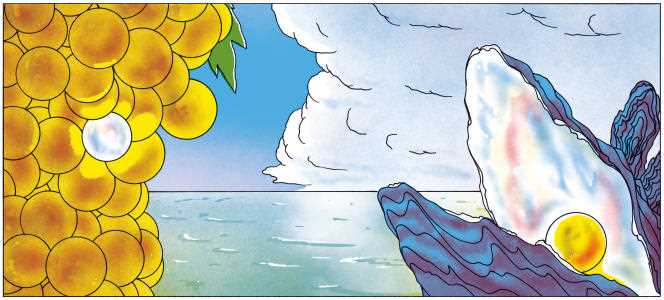Muscats from all countries, any sweetness
It’s a galaxy unto itself as it designates wines and grapes of all colors. In the vineyards, Muscat brings together between 150 and 200 different grape varieties. Let’s start with the one that is eaten, which you have surely already come across on the stalls, the Muscat of Hamburg. It occupies a special place in the vast family since it is red, with large spaced berries on the bunch, and it is not used to produce wine.
In the wine world, the most common is Muscat blanc à petits grains. It is also one of the oldest grapes grown for wine. In France, it is already cited under Charlemagne for the quality of its production. It originated in ancient Greece, where it is still used today for sweet wines, including the very popular Muscat of Samos. It is found in Germany from the twelfthand century (under the name of muskateller), but also in Italy, with the noscato of Asti, in Switzerland (in the Valais) and as far as Hungary.
Muscat of Alexandria is another famous variety. Spread by the Romans around the Mediterranean, it is found today as far away as Australia where it bears the affectionate diminutive “lexia”. In France, it is mainly used in blending, especially in Roussillon. In Spain, it is used to produce moscatell, in Portugal, moscatel de Setubal. And it is naturally found in Italy, especially on the islands of Sicily and Pantelleria, where it produces sweet straw wines (whose grapes dry on a straw mat). There is also the Syrian muscat, the Cypriot muscat and many others not very present in France.
Muscat Ottonel, finally, is much more recent, created by a hybridization of Muscat and Chasselas in the middle of the 19th century.and century. Today, it is used in Alsace, in blends with Muscat à petits grains, to produce Muscat d’Alsace, a dry or sweet wine depending on the harvest date.
Muscat represents seven natural sweet wine appellations in France: Muscat de Frontignan, Muscat de Lunel, Saint-Jean-de-Minervois, Mireval (all in Languedoc), Muscat de Rivesaltes (in Roussillon), Beaumes-de-Venise (in the Rhône) and Cap Corse.
So what do all Muscats have in common? These are generally sweet or syrupy wines, with low acidity, which can be recognized by their “muscat” aromas. Very intense, they are reminiscent of musk, but are recognized above all by very characteristic scents of flowers and fresh or dried grapes, as close as possible to their original fruit.
You have 46.7% of this article left to read. The following is for subscribers only.
